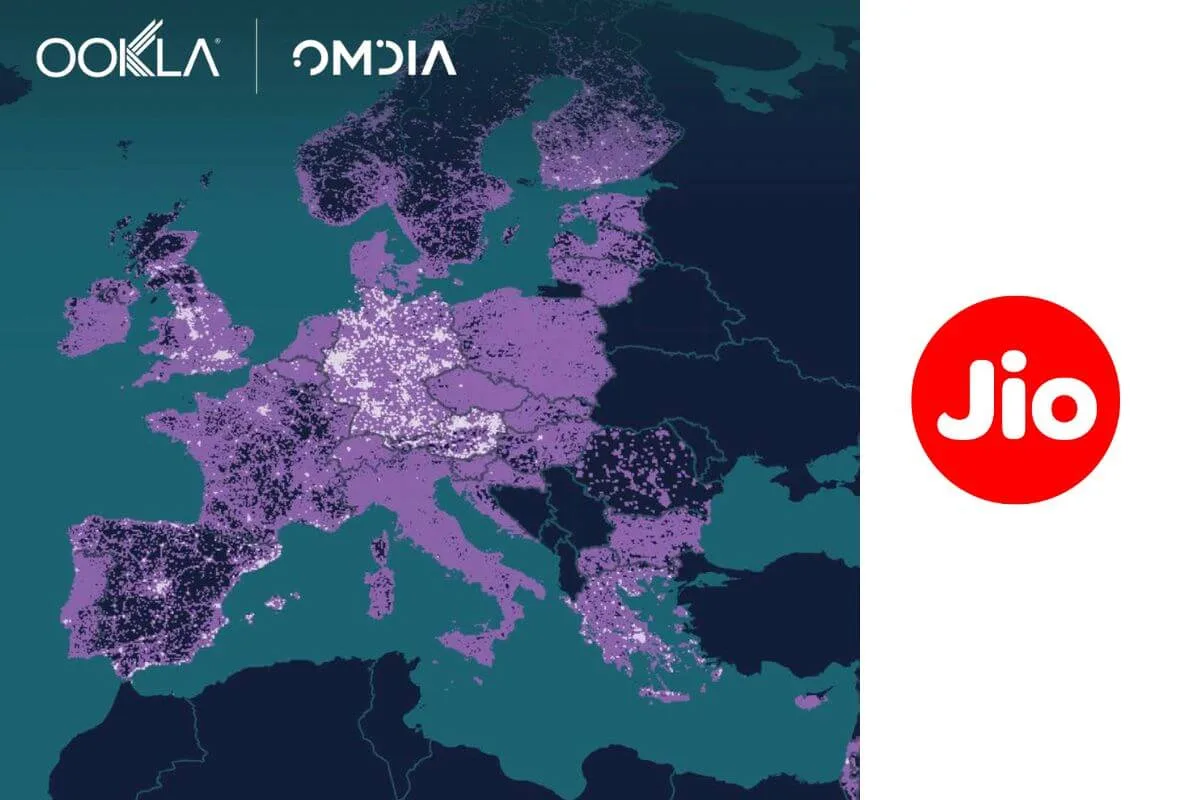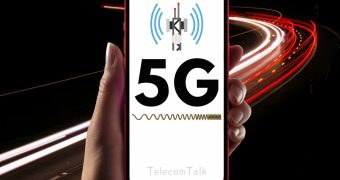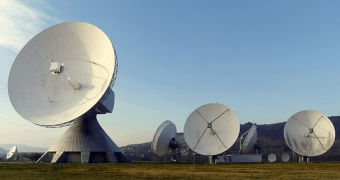
In India, Reliance Jio has migrated its 5G FWA (Fixed Wireless Access) traffic to a dedicated network slice. Network slicing is one of the key features of 5G Standalone (5G SA) architecture, and as Jio has deployed 5G SA, the largest telco is delivering fixed wireless broadband using a separate network slice to provide an optimized experience, TelecomTalk previously reported. Meanwhile, Europe severely lags behind other major regions in 5G SA rollout and performance, according to Ookla's report titled "A Global Evaluation of Europe's Competitiveness in 5G SA."
Also Read: Europe’s 5G Adoption Expected to Surpass 4G by 2026: GSMA Report
India Median 5G SA Download Speeds
"Developed independently in collaboration with Omdia and leveraging Ookla’s industry-leading network intelligence, this analysis benchmarks Europe’s progress in deploying and monetizing 5G SA networks against key global regions such as North America and Asia," Ookla said on February 23, 2025.
According to the report, Europe currently features the poorest outcomes in terms of 5G SA performance and availability among major global regions. Across Europe, significant disparities in 5G SA rollout progress among countries have undermined the bloc's competitiveness in the technology, widening the gap with leaders like the US and China.
In Q4 2024, China (80 percent), India (52 percent), and the United States (24 percent) led the world in 5G SA availability based on Speedtest sample share, ahead of Europe (2 percent). India recorded median 5G SA download speeds of 260.71 Mbps in Q4 2024, ahead of China (224.82 Mbps), Japan (254.18 Mbps), and Europe (221.17 Mbps), the report said.
Jio's Dedicated Network Slicing
Since Jio is the only operator claiming to offer 5G SA in India, the median 5G SA speeds are attributed to Jio. While India led these countries in download speed on 5G SA, its median latency (52.24 ms) and upload speed (15.69 Mbps) were relatively less competitive.
Also Read: AI Can Be a Game-Changer for Europe’s Economic Growth: Report
Global 5G SA Rankings
For comparison, in Q4 2024, median download speeds on 5G SA in India were 31 percent higher than those on standard 5G NSA networks. Speedtest Intelligence data reveals that in Q4 2024, the median consumer in Europe experienced the lowest 5G SA download speeds at 221.17 Mbps among a sample of countries across leading regions, compared to 384.42 Mbps in the Americas, 259.73 Mbps in Emerging Asia-Pacific, and 237.04 Mbps in Developed Asia-Pacific.
"At the regional level, Europe lags behind its peers on several 5G SA performance indicators, raising concerns about the bloc’s competitiveness in the technology," Ookla said.
"...Countries like the United States and India, where high 5G SA availability is concentrated in a single operator - T-Mobile and Reliance Jio respectively, driven by aggressive nationwide low-band deployment. In Jio's case, this was further bolstered by its unique decision to skip the NSA architecture entirely in favor of a full 5G SA rollout," the report said.
Also Read: Telcos Have Reached a Saturation Point with Limited Monetisation Prospects?
Consumer 5G SA Use Cases and Monetization
According to the report, FWA has emerged as a key driver of broadband subscription and revenue growth for T-Mobile and Verizon in the US, alongside advanced segmentation based on performance-oriented tariffs. While most attention on monetizing 5G SA has centered on enterprise opportunities, the report stated that dedicated 5G network slices targeting various consumer segments are gradually emerging, both in Europe and other markets worldwide.
Consumer monetization strategies for 5G SA vary, ranging from incremental revenue gains (Singtel) to customer retention (Deutsche Telekom and EE) and upselling (3 Austria, Elisa Finland, Vodafone UK). The report highlighted that 63 percent of consumers expressed willingness to pay more for faster speeds on 5G, followed by premium download speeds, speed boosts, and other features.
The Ookla report highlighted some consumer use cases of 5G SA, including Singtel's Express Pass, which provides data priority for video apps; the 5G Event Pass, which enhances speed at specific locations or during events like concerts; Deutsche Telekom's 5G+ Gaming, which utilizes network slicing; and EE's 5G SA, which offers a VIP connection when the network is busy. Vodafone UK, on the other hand, markets its 5G SA offering, "5G Ultra," as enabling "up to 25 percent improved phone battery life" and delivering average speeds of 15–200 Mbps, according to the report.
Also Read: Nokia and Ericsson Lead EU Tech Industry Call for More Investment, Fewer Rules
Enterprise 5G SA Use Cases and Monetization
In Taiwan, Far EasTone deployed a 5G smart patrol car network slicing solution for the Kaohsiung City Police Department, TelecomTalk previously reported. Telia Norway and the Norwegian Defense Materiel Agency demonstrated how a private slice can be used to establish a public-based private network for the Norwegian Armed Forces. Additionally, Telia showcased how network slicing can function on Terrestrial Trunked Radio (TETRA) in emergency situations.
The media and broadcasting sector is currently the most popular focus for operators exploring network slicing. Operators such as Vodafone UK, Verizon, SFR, Deutsche Telekom, Virgin Media O2, and T-Mobile have all made announcements in this space, according to the report. Orange France too deployed private 5G SA during the Olympic Games.
Network slicing
The network insights provider highlighted that "Network slicing can deliver guaranteed high uplink throughput, ultra-low latency, and robust reliability—key to transmitting multiple high-resolution video streams even amid congestion—and ensure real-time audio and video synchronization, minimizing delays from capture to broadcast."
Also Read: European Union Says Its AI Investment Is Only 4 Percent Compared to US
Need for Pan-European Strategy to Boost 5G SA
"Europe is at an important crossroads in its 5G journey. Despite setting the most ambitious infrastructure targets among advanced liberal economies, the bloc continues to lag behind its developed peers in key measures of network reach and performance with 5G SA—a technology it has positioned as central to its emerging pro-growth industrial strategy and the broader European competitiveness compass," Ookla's report concluded highlighting "the urgent need for a more coordinated, pan-European strategy to accelerate 5G SA deployment and adoption as a distinct objective, separate from the bloc's broader 5G coverage goals."















